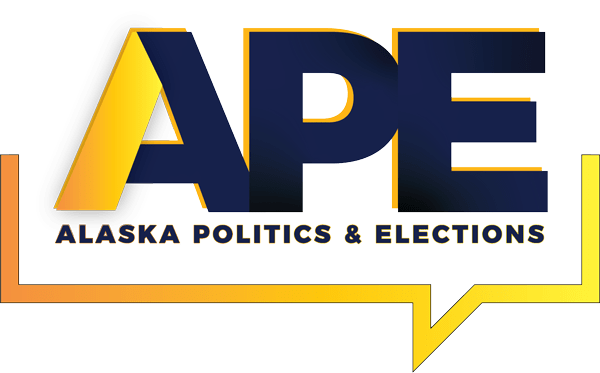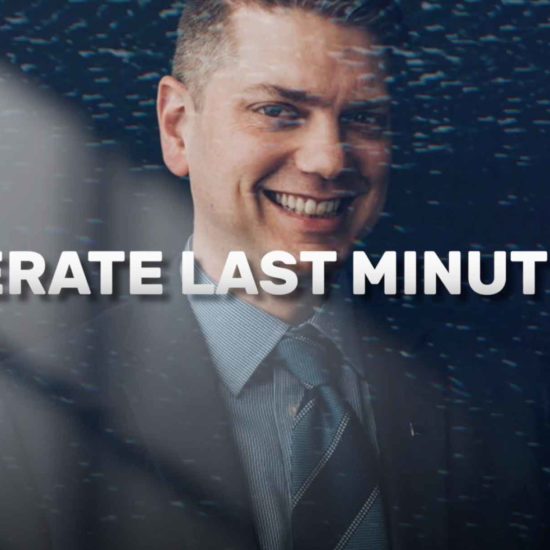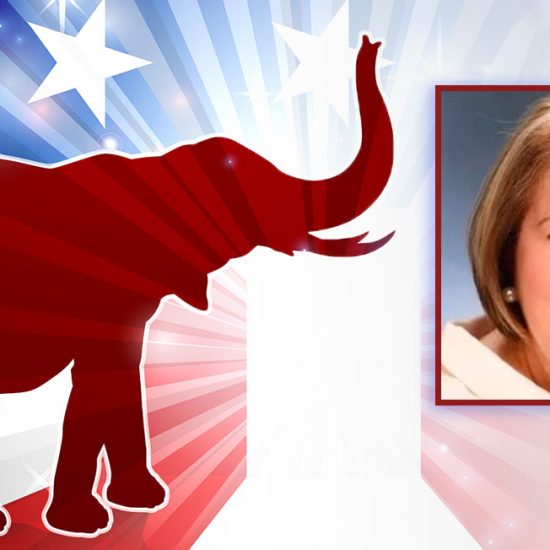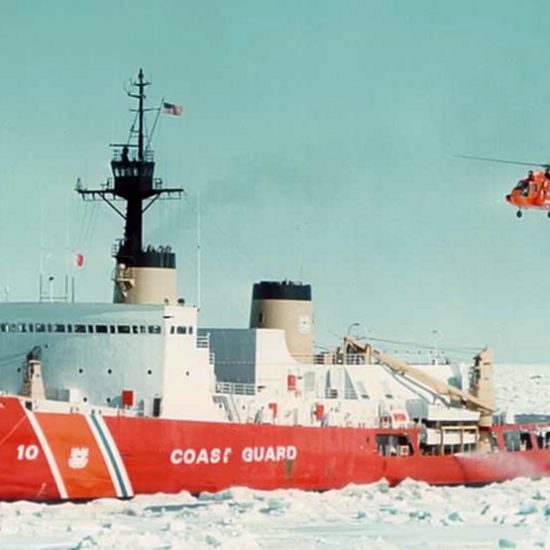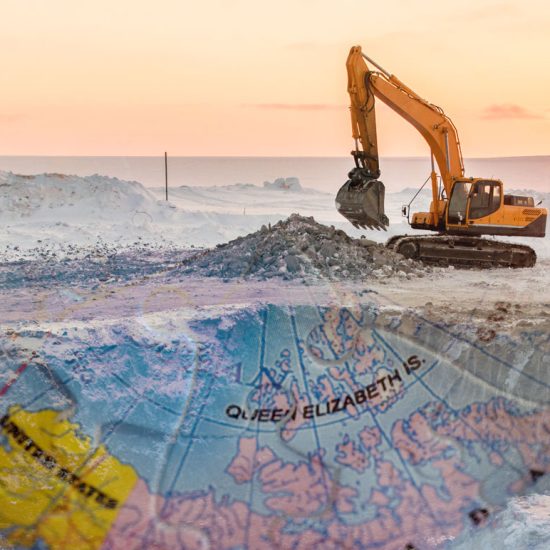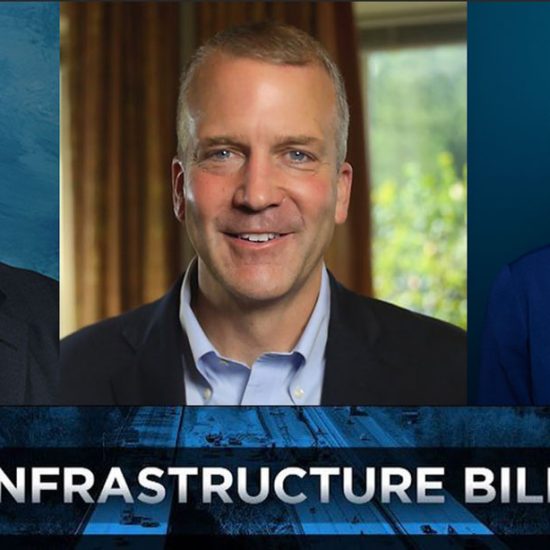President Kevin Meyer, Speaker Mike Chenault, Lieutenant Governor Byron Mallott, members of the Legislature, members of the Cabinet and fellow Alaskans. At this time last night, you gathered in this chamber, and I spoke broadly about my administration’s vision for Alaska’s future.
Tonight, we gather to talk about the budget. As you exit, each of you will be provided a copy of our budget overview and summary documents. You are the first in the state to receive this. The media will get it later tonight, and it will be posted on my website for public review.
My message to you this evening will be simple. It will not be easy, but we will manage Alaska out of the fiscal challenges facing our state. And we will do it thoughtfully, judiciously and together – as Alaskans.
I spent much of last night talking about opportunity.
As we move forward, our common interest must be to strengthen Alaska’s future and to enable opportunity for all Alaskans. What does this mean? It means in Alaska if you work hard and play fair, you can succeed. In a state this young, each and every person can make a positive difference.
A hallmark of my administration is to engage the talent and capacity of all Alaskans so we can manage through this challenge together. We recently asked State employees and the public for suggestions. I am pleased with the ideas we’ve received so far. Some are practical and can be implemented immediately, like making sure the lights are off in State buildings after hours and using more video and audio meetings to avoid travel. Good ideas continue to pour in, and I am humbled by the dedication many of you have shown to improve our future.
The role of government is to provide the environment for Alaskans to feel secure, to provide the education necessary to pursue a livelihood, the freedom to raise a family and the opportunities so our children and grandchildren can have even more and greater opportunities. Government should not be in the business of taking care of every last detail, but we must provide the necessary services.
Our Challenge
As you know, about 90 percent of the State’s general fund comes from oil revenue. This means Alaska’s State government funding has two drivers: oil price and oil production.
Unfortunately, neither is going in our favor.
In recent months, the price of a barrel of crude oil has fallen dramatically.
While we cannot fix oil prices, we can fix government.
The State budget passed last session was set when oil prices were at $110 per barrel. Several months later, oil prices dropped sharply, and have stayed at about $50 since the start of the new year.
Compounding the low price effects is the flow of oil in the pipeline. The Trans Alaska Pipeline System is currently only flowing at 25 percent of its peak production.
With oil worth only about half what it was when our current State budget was developed, a $3.5 billion gap has formed between the amount being spent and the amount of oil revenue the State receives.
The operating and capital budget passed last session totaled $6.1 billion, with expected revenue at $2.6 billion, or even less, if the price continues to drop.
A budget gap this extreme requires our collective action.
Most everyone here will admit: with the high oil prices over the last several years, government grew fast. What sits before us now simply cannot be sustained.
However, we must recognize the cost of government should be driven by our population and geography; not the price of oil.
Our state has many unique challenges. It would be nearly impossible to reduce government to fit the revenue of $50 per barrel of oil.
Solutions
Fortunately, and to your credit, the men and women in this room set aside a significant portion of revenues in recent years.
Thanks to your foresight, Alaska has $14 billion in available savings.
This gives us a bridge, but at current spending levels and with oil prices where they are, that bridge will only last three years.
If prices rise to levels projected by the Department of Revenue, this would mean the savings bridge would carry us five to six years.
Whether the bridge lasts three or six years, we must take action now. But remember, State spending has a tremendous impact on our economy and our people.
There is some consolation. For one, our economy is much better positioned than during past oil price downturns. Compared to the late 1980’s, our economy has 50 percent more jobs.
Industries like tourism, fisheries, air cargo and mining have expanded greatly, and they actually benefit from low fuel prices.
Native corporations and the health care sector also now provide a wide range of stable jobs throughout the state.
Recognizing our challenge, we must now work together to take action prudently and in a manner that keeps Alaska’s overall economy stable.
Short-Term Solutions
There are short-term actions, as well as long-term strategies to get Alaska on a stable fiscal platform.
Let’s start with the short term.
The fiscal year 2016 budget recommendation begins with cutting back on spending.
Last month, I issued an administrative order to stop all discretionary spending on six mega projects. This gives us the opportunity to evaluate each project to decide whether continuing them is in the best long-term interest of the State.
I asked all of our commissioners to submit scenarios if their department budgets were reduced by five to eight percent. I have analyzed these responses, and am now forwarding a 2016 general fund budget that reduces non-formula agency spending by 6.5 percent from fiscal year 2015, and 5.4 percent below the work-in-progress budget.
In my own office, I am taking a base operating reduction of 11 percent. That means I will have fewer staff members than in previous administrations.
Every agency is faced with the difficult task of reductions, which means formula programs are affected, as well.
Education is among my highest priorities. Teachers, your job is difficult, and these challenging times introduce uncertainty. I want you to know we value your service.
In this fiscal environment, however, I am asking the Department of Education to also make some reductions, though at a proportionately smaller level.
In my endorsed budget, the K-12 formula funding remains intact, but I’ve eliminated the one-time funding added last year. This equates to a 2.5 percent funding reduction.
In a time of limited cash flow, it is increasingly difficult to forward-fund programs and lock up revenue for a year.
This budget continues the forward-funding of education, although at 90 percent of the current level.
Let’s be clear. This is not a 10 percent cut in education funding. It is just reducing how much is prefunded.
The Legislature will receive studies on the K-12 formula this summer. I look forward to working with you on final fiscal year 2017 funding next session.
Budget reductions overall are difficult. And I’m aware cuts in education are especially difficult, and our smallest communities are hardest hit.
There are also the retirement system penalties which hurt most the smallest of school districts.
My administration is committed to finding solutions to these and other unique issues facing our schools, and we look forward to working closely with the education community.
Municipal revenue sharing is another program that is important, but difficult in these fiscally-challenging times.
In my budget for fiscal year 2016, municipalities will receive $57 million dollars in revenue sharing. That is $3 million less than last year.
Smaller communities rely more on revenue sharing than do larger communities. I am also committed to helping the Alaska Municipal League hold smaller communities harmless from retirement system penalties.
For small employers, I want to help address the 2008 retirement payment floor. The impact on small Public Employees’ Retirement System (PERS) employers is disproportionate, and it is not in the state’s best interest for our small local governments to be affected so negatively.
The decisions we make on the State budget affect the overall economy.
That is why my budget will include the $450 million of federal money available to us through Medicaid expansion. It is 100 percent federally funded until December 2016; then steps down over four years to 90 percent.
Investing in the health of Alaskans is sound, prudent fiscal policy. We all want Alaskans to be as productive as possible, but people cannot work, hunt or fish unless they are healthy. Medicaid expansion is good for Alaskans and good for Alaska.
Medicaid expansion is also our State’s path toward Medicaid reform.
Partnerships will be a key component of this reform.
We have the opportunity to work with our tribal partners on health care as well as child welfare matters.
These State and tribal partnerships also will provide enhanced federal match opportunities. Teaming up with nonprofits and the Mental Health Trust Authority is also crucial.
As a result of Medicaid expansion, Alaska will see direct savings in the costs of corrections, behavioral health and assistance programs. We will also see indirect savings in retiree and State employee health care costs.
In December, I submitted a completely stripped down capital budget. In the amended version, a few key priorities will be added back.
These include some projects that are under construction but not finished, limited critical maintenance and small programs that have demonstrated return on investment, such as weatherization and energy monitoring.
Another example is the $500,000 set aside for work on our Arctic policy. The United States will chair the Arctic Council. Alaska is the only Arctic state, so we must take a leading policy role.
Craig Fleener and I look forward to working with your Alaska Arctic Policy Commission and University of Alaska Fairbanks’ Center for Arctic Policy to determine the best use of this investment to position Alaska’s interests at the top of the Arctic Council agenda.
The capital budget is $150 million, including offsetting re-appropriations.
With deep agency reductions and a minimal capital budget, my fiscal year 2016 endorsed budget reduces general fund spending by $550 million, which is nine percent below the previous year.
This is after covering the required $700 million in oil tax credit payments, as well as the $262 million in retirement costs.
Some have previously recommended we issue pension obligation bonds to cover the $262 million in retirement costs. Borrowing against the future does not help our State’s credit ratings.
Doing so would effectively push the bill forward. I said I would not pass the buck to future generations, and I will not.
It will mean we have to pay and suffer a bit now, but this decision will mean we will not burden our children and grandchildren with the debt.
Longer Term Strategies
I have covered the short-term action. Now let me cover the longer term fiscal strategy. I will start with a few key principles.
Government must limit spending, and as you can see from the fiscal year 2016 proposal, the administration is prepared to take on that challenge.
However, as Governor Wally Hickel used to say, “We can’t cut our way into prosperity.” We must be ready to make prudent investments.
We need a rational approach to creating a shared vision to identify what the right level of government is.
I have asked my commissioners to tell me what their departments would look like in four years if their budgets were 25 percent smaller than they are today.
I am talking about deep cuts, and they will hurt. I began these discussions knowing that the positions we are talking about are people; hardworking Alaskans with families.
I am proud of those of you who have dedicated your lives in service to this state. We will have to make some tough decisions, and I assure you: any cut I make will not be made lightly.
We cannot accept business as usual. We will be efficient, innovative and creative in the delivery of State services.
Commissioners will be working together across departments to find creative solutions using existing resources.
In some cases, a department may have to give up responsibility for a program that another agency can provide more efficiently.
I will also redesign the administrative structure in ways that save real money but maintain maximum program and service delivery. Two key areas are in postsecondary education and criminal justice.
I’ve asked the leaders of the Department of Labor and Workforce Development, the University and Department of Education to look at postsecondary education holistically. This means taking a closer look at the postsecondary education commission, regional technical centers, Alaska vocational technical centers and the university’s community campuses.
Using these assets efficiently ensures access to education and training. I expect to see a plan develop during fiscal year 2016.
Criminal justice is another area in which I want to see several departments combine services.
Corrections, public safety, law, the court and public defender systems must work together to reduce costs and keep Alaskans safe – and avoid the need to build another prison.
These solutions will be more difficult to implement. They will likely take longer and require open dialogue.
I also want services privatized to maximize local, nonprofit and tribal partnerships.
As we downsize, I will ask this Legislature to provide flexibility in budgeting so we can make smart, timely decisions within and across agencies. I also want to take a hard look at statutes that require more spending or create road blocks to streamlining services.
Looking Forward
As we move forward, it is important to stress: the State has a cash flow problem; not a wealth problem.
Our State earned $2.4 billion more last year from its financial assets than it did from petroleum revenue. In fact, the investment revenue in fiscal year 2014 was larger than the entire State’s general fund budget.
In 2014, the State earned more than $8 billion in investment income.
I have asked the revenue commissioner to explore ways to safely put the State’s wealth to work – without jeopardizing or spending the underlying financial assets.
We need to make sure our money works as hard as we do.
Today, Alaska is oil dependent. For a sustainable fiscal platform, we need to improve oil production, but also depend on natural gas, other natural resources and the broader economy.
Ideally, Alaska could see revenue from natural gas starting in 2023.
This is my highest long-term priority strategy for both affordable, clean, in-state energy, as well as a significant driver of State revenue.
If our oil price projections hold true, and we stay disciplined on our spending, I am confident we will be able to successfully chart these waters with savings, expanded oil production and prudent use of our existing fiscal assets.
But if prices stay low next legislative session, we will need to discuss more traditional revenue options.
I like to think of myself as a carpenter with a law degree.
In my tool box are dozens of tools. Few building projects require them all.
As Governor, I have left many of the tools the State has for balancing the budget and generating revenue in the tool box for another day if needed.
Conclusion
It is clear we as a State must reduce our spending. But keep in mind that doing so will affect Alaska’s contractors and associated workforces. To offset this, I will look to ways for private sector activity to pick up the slack, as government works to reduce spending. I want dozens of new independent oil companies on the North Slope.
There are things we as a State can do to lower the bar of entry for those companies. I am not talking about cutting any corners on safety or environmental issues. We currently have a North Slope model that is designed for large companies such as the ones we are fortunate to have here in Alaska.
But we need to attract the next wave of companies. I have discussed with both the industry and federal regulators the concept of the State owning and building infrastructure on the North Slope with the cost to be shared by the multiple users; similar to the toll road the State built for the Red Dog mine years ago.
Since being sworn in on December 1st, I have met with about six members of President Obama’s Cabinet and explained to each of them that I am the Governor of a State whose revenues are about 90 percent dependent on oil, and we have an oil pipeline that is three-quarters empty.
I had the same conversation with President Obama on December 5th. I told them all that I will be very aggressive in getting more oil into that pipeline. That is because Alaska is an owner state, thanks to the statehood compact.
Since December 1st, I have also held a dozen meetings with representatives of the oil industry. I invited presidents of two large independent oil companies here to Juneau to discuss their interests in Alaska.
I told them I am prepared to do whatever I can to assist them with the federal regulatory process. I met with Secretary of the Department of the Interior Sally Jewell to specifically convey my intent to work alongside these companies as they continue to explore for more oil.
In the past two months, I have met with the Alaska Oil and Gas Association twice, and as recently as this morning, I hosted a breakfast at the Governor’s House for the AOGA board, and delivered this same message.
I want to fully utilize all of Alaska’s infrastructure, including the Alaska Railroad, the Alaska Marine Highway System vessels and the Trans Alaska Oil Pipeline.
As we work toward generating new revenue through increased natural resource development, we must remain committed to hiring locally.
When a company asks Alaska for credits for future projects, I will make sure there is a provision for local hiring incentives in that contract.
I am confident there are a number of ways to stimulate Alaska’s economy through the private sector’s investment in our state in such a way that Alaska’s economy does not suffer from reduced State budgets.
Finally, what all of this shows is just how high a priority the large-volume gas line is to Alaska’s fiscal future. I will assess every avenue to expedite the building of this all-important project.
Just as construction of the Trans Alaska Pipeline created 70,000 jobs, building a large-volume gas line will also mean more opportunities for Alaskan families.
A gas line will also create more revenue for the State, as well as low-cost energy and clean-burning fuel.
When we unlock the trillions of dollars of resources in our state, we will have a very different economy in Alaska, and we will be well on our way to fiscal stability.
Right now, we have to fix our short-term problems, but must stay focused on our long-term opportunities.
Norway did, and has a permanent fund of nearly $900 billion. That country’s long-term goal is to reach $3 trillion. We need to work on Alaska’s long game.
Alaska’s Statehood Compact mandates we not sell the resources in the ground. We can only lease the rights to those resources. That is what makes us an owner state. We are the only state in the union with that opportunity.
In order to build ourselves out of this fiscal situation… it is time we finally start acting like the owners that we are.
Let’s recap. First, I said this effort on downsizing starts with me. I told my commissioners I would make the Governor’s office take twice the amount of budget cuts I asked of them.
I followed through and trimmed 11 percent. There is still some work to be done but today, the Governor’s staff is already the smallest it’s been in 15 years. My administration can and will do more with less. I encourage you to do the same.
I have stopped discretionary spending on mega projects, taken steps to reduce municipal revenue sharing, and asked my commissioners to develop plans for cutting their departmental budgets by five to eight percent in the short term, and up to 25 percent in the long term.
This will be difficult, but will ultimately help set us on a sustainable path.
These are just a few examples. The documents you will receive tonight outline my approach to the budget in much greater detail.
Members of the Legislature, I thank you for graciously making the time for tonight’s State of the Budget.
I have great respect for this honorable institution and the legislative process. I also hold in the highest regard the separation of powers inherent in our constitution. You are the appropriators. Therefore, I will lead by example, but I need your cooperation and your commitment that you will roll up your sleeves and help me navigate our State through these rough waters.
My administration stands ready to assist this Legislature in crafting a budget over the next 87 days that I can sign with pride, knowing this legislative body rose to the challenge and made the hard choices necessary to put our State back on a path to prosperity.
I look forward to working with you at this critical time in the history of our great state.
Let us seize the opportunity this challenge provides to improve the lives of Alaskans today, tomorrow and for the next 100 years.
May God bless you, and may God bless Alaska.



